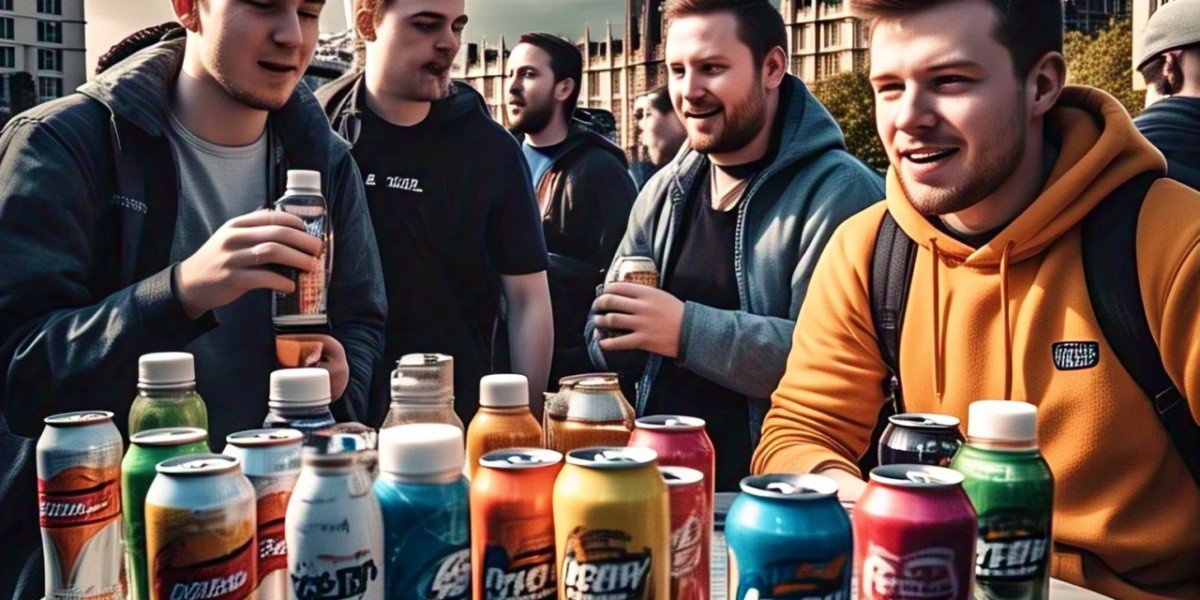United Kingdom Energy Drinks Market Size, Share, and Forecast Analysis (2025–2033)
Executive Summary
The United Kingdom Energy Drinks Market is projected to reach US$ 4.29 Billion by 2033, up from US$ 2.75 Billion in 2024, registering a CAGR of 4.98% during the forecast period (2025–2033). This growth is driven by evolving consumer lifestyles, increasing demand for convenient energy sources, and constant innovation in flavors, packaging, and healthier formulations.
Key Questions This Report Answers
- What is the projected market size of the UK Energy Drinks Market by 2033?
- What are the major growth drivers and challenges in this market?
- Which packaging types and product variants are most preferred by consumers?
- What demographic groups are fueling the demand for energy drinks?
- How are regional trends influencing the growth of the UK energy drinks industry?
- What are the latest product innovations and technological advancements in the sector?
- How are regulatory changes and health awareness impacting the market?
- Which distribution channels are most effective in driving product sales?
- How are major players positioning themselves to stay competitive?
- What opportunities exist for new entrants or niche energy drink brands?
Market Overview
The UK's energy drinks market has matured significantly over the last decade, transforming from a niche segment into a mainstream functional beverage category. Fueled by hectic urban lifestyles and the need for quick energy replenishment, energy drinks have become a daily essential, particularly for young professionals, students, fitness enthusiasts, and night-shift workers.
Leading global brands such as Red Bull, Monster Energy, and PepsiCo’s Rockstar dominate the landscape, but there is rising interest in health-conscious, organic, and sugar-free alternatives. The shift in consumer preferences has opened doors for boutique brands focused on clean-label ingredients, nootropics, and eco-friendly packaging.
Market Drivers
1. Innovative Product Development
Continuous R&D and product innovation play a vital role in market expansion. New flavors, healthier compositions, and attractive packaging have proven to capture consumer interest. Recent launches include:
- Tenzing's Super Natural Energy (2024): Claimed to be the strongest natural energy drink.
- Lucozade’s Blucozade Range: Targeted at sports and daily energy needs.
- Hell Energy AI: The UK's first AI-developed energy drink.
2. Growing Demand for On-the-Go Convenience
Consumers are increasingly choosing energy drinks for their portability and instant impact. With busy schedules and long workdays, particularly in urban settings like London and Manchester, energy drinks serve as a handy pick-me-up.
3. Rise of Health-Conscious Consumers
There is a clear trend toward sugar-free, low-calorie, and natural options. Ingredients like green tea extract, ginseng, and guarana are gaining traction. The presence of vitamins, minerals, and amino acids is also enhancing product appeal.
4. Technological Advancements in Production
AI-based formulation, automation in manufacturing, and environmentally sustainable packaging have all contributed to increased efficiency and better product quality. Brands that can leverage such technologies are finding an edge in the market.
New Publish Reports
Market Challenges
1. High Sugar and Caffeine Concerns
Growing awareness of the health risks associated with sugar and caffeine intake is prompting regulatory interventions. The UK Sugar Tax and other public health initiatives are pushing brands to reformulate their offerings, often at the cost of taste retention.
2. Competition from Functional Beverage Alternatives
The rise of cold brews, herbal teas, kombucha, and yerba mate is providing stiff competition. These alternatives are seen as cleaner and more balanced energy sources, especially by health-conscious consumers.
Regional Analysis
London
- A hub for young professionals and students.
- Strong nightlife and fitness culture.
- Rising demand for premium and sugar-free energy drinks.
East of England
- High energy drink penetration in cities like Cambridge and Norwich.
- Growth driven by student population and active lifestyles.
Scotland
- Increasing preference among youth and fitness enthusiasts.
- Cities like Glasgow and Edinburgh show growing demand for both traditional and natural variants.
Yorkshire and the Humber
- Significant market size in cities like Leeds and Sheffield.
- Demand driven by students and working professionals, with a tilt towards natural blends.
Market Segmentation
By Packaging Type
- Can (Most popular due to portability and convenience)
- PET Bottle (Preferred for resealability and value packs)
By Product Type
- Non-organic (Mainstream market, led by big brands)
- Organic (Fast-growing segment)
- Natural (Gaining traction among health-conscious consumers)
By Target Consumer
- Teenagers
- Adults
- Geriatric Population (Emerging niche with health-centric offerings)
By Distribution Channel
- Supermarkets/Hypermarkets
- Convenience Stores
- Specialist Stores
- Online Retail Stores
- Other (Gyms, vending machines, petrol stations)
Competitive Landscape
The market is consolidated with a few dominant players, but the rise of innovative startups and health-focused brands is reshaping the competitive dynamics.
Key Companies Profiled
- Suntory Holdings Limited
- Red Bull GmbH
- Monster Energy Company
- The Coca-Cola Company
- GlaxoSmithKline PLC
- PepsiCo Inc.
- Max Muscle Nutrition
- TSI Consumer Goods GmbH
- Global Trade Holdings Co., Ltd.
- Nestlé SA
Each company is analyzed based on:
- Overview
- Key Personnel
- Recent Developments
- Revenue Trends
Strategic Outlook and Future Trends
- Expect a surge in AI-formulated drinks, personalization, and nutrient-enriched functional beverages.
- Sustainability in sourcing, packaging, and production will be a key differentiator.
- Expansion of online channels and D2C platforms will reshape the distribution landscape.
- Growing collaborations between fitness brands and beverage companies to offer co-branded energy solutions.
Conclusion
The United Kingdom Energy Drinks Market stands at a pivotal point of transformation. While traditional energy drinks continue to maintain dominance, the future belongs to innovative, healthy, and functional variants that cater to a more discerning and informed consumer base. Strategic investments in product development, tech-driven manufacturing, and sustainability will determine long-term success.









